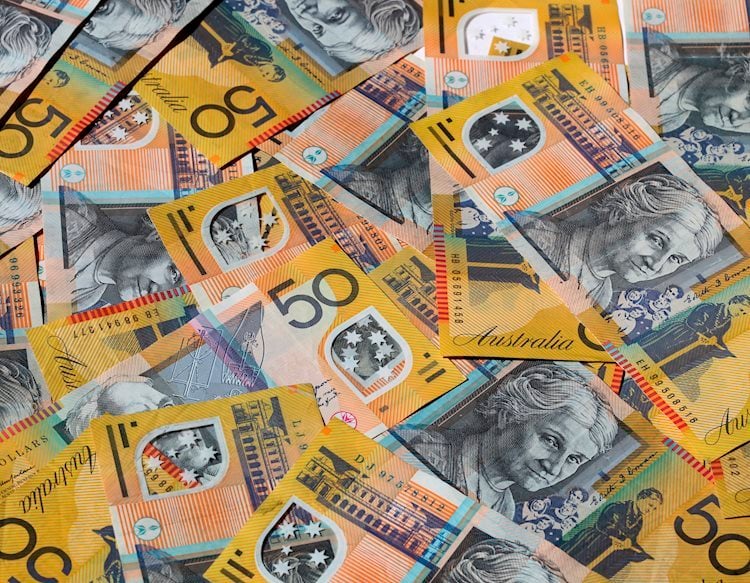Products You May Like
- AUD/USD surges higher in light of hawkish RBA and uncertainty over US election.
- US Dollar weakens on speculation of Kamala Harris victory and Fed’s dovish rate cut bets.
- US Nonfarm Payrolls disappointed, missing estimates and casting doubt on Fed’s aggressive rate cut path.
The AUD/USD surged higher on Monday, rising by 0.70% to 0.6600 amid expectations of a hawkish Reserve Bank of Australia (RBA) policy decision and uncertainty surrounding the US presidential election.
Recently, the AUD/USD has declined due to a US Dollar recovery and concerns over China’s economy. The RBA is expected to maintain a hawkish stance, supporting the AUD in the long term. Market expectations for an RBA rate cut are low, while investors are confident of interest rate cuts by the Federal Reserve (Fed) later this week and again in December.
Daily digest market movers: Australian Dollar rises with US election in sight
- The US Dollar (USD) fell on Monday as polls suggested a tight race between Vice President Kamala Harris and former President Donald Trump in Iowa.
- A Trump victory could boost the USD due to expected protectionist policies and higher inflation.
- A Harris win would likely continue current policies, benefiting riskier currencies.
- The Fed is expected to cut interest rates by 25 basis points (bps) on Thursday, influencing the USD.
- On the other hand, the RBA is expected to hold interest rates steady.
- The RBA’s outlook on economic activity and inflation will also be closely watched as Australian reports recently showed mixed signs but with inflation still above the bank’s target.
AUD/USD technical outlook: Bullish signs emerge, pair might have hit bottom
The Relative Strength Index (RSI) is in the negative area at 41, but the RSI slope is rising sharply, suggesting that buying pressure is picking up the pace. On the other hand, the Moving Average Convergence Divergence (MACD) is flat and red, indicating that selling pressure is weakening.
The AUD/USD pair has resumed its upward trajectory, driven by a recovery in technical indicators from oversold levels. This recovery suggests that the recent sell-off may have been excessive and that buyers are re-entering the market. The pair had previously hit its lowest point since August, indicating that the downtrend may be losing momentum.
Australian Dollar FAQs
One of the most significant factors for the Australian Dollar (AUD) is the level of interest rates set by the Reserve Bank of Australia (RBA). Because Australia is a resource-rich country another key driver is the price of its biggest export, Iron Ore. The health of the Chinese economy, its largest trading partner, is a factor, as well as inflation in Australia, its growth rate and Trade Balance. Market sentiment – whether investors are taking on more risky assets (risk-on) or seeking safe-havens (risk-off) – is also a factor, with risk-on positive for AUD.
The Reserve Bank of Australia (RBA) influences the Australian Dollar (AUD) by setting the level of interest rates that Australian banks can lend to each other. This influences the level of interest rates in the economy as a whole. The main goal of the RBA is to maintain a stable inflation rate of 2-3% by adjusting interest rates up or down. Relatively high interest rates compared to other major central banks support the AUD, and the opposite for relatively low. The RBA can also use quantitative easing and tightening to influence credit conditions, with the former AUD-negative and the latter AUD-positive.
China is Australia’s largest trading partner so the health of the Chinese economy is a major influence on the value of the Australian Dollar (AUD). When the Chinese economy is doing well it purchases more raw materials, goods and services from Australia, lifting demand for the AUD, and pushing up its value. The opposite is the case when the Chinese economy is not growing as fast as expected. Positive or negative surprises in Chinese growth data, therefore, often have a direct impact on the Australian Dollar and its pairs.
Iron Ore is Australia’s largest export, accounting for $118 billion a year according to data from 2021, with China as its primary destination. The price of Iron Ore, therefore, can be a driver of the Australian Dollar. Generally, if the price of Iron Ore rises, AUD also goes up, as aggregate demand for the currency increases. The opposite is the case if the price of Iron Ore falls. Higher Iron Ore prices also tend to result in a greater likelihood of a positive Trade Balance for Australia, which is also positive of the AUD.
The Trade Balance, which is the difference between what a country earns from its exports versus what it pays for its imports, is another factor that can influence the value of the Australian Dollar. If Australia produces highly sought after exports, then its currency will gain in value purely from the surplus demand created from foreign buyers seeking to purchase its exports versus what it spends to purchase imports. Therefore, a positive net Trade Balance strengthens the AUD, with the opposite effect if the Trade Balance is negative.
